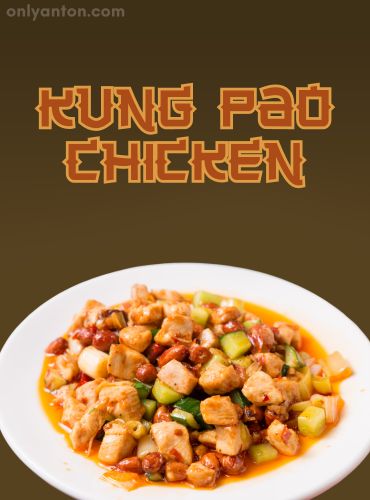Introduction
The Eight Great Tastes of Chinese Cuisine (八大味道) form the foundation of one of the world’s most diverse and flavourful culinary traditions. In Chinese culture, taste is not just a matter of personal preference but a reflection of deeper philosophical principles. Achieving the perfect balance and harmony in flavour is a culinary art. Each taste plays a crucial role in shaping the overall experience of a dish. Whether through a sweet sauce that balances spice or a dash of bitterness that cleanses the palate, these tastes complement one another in a harmonious symphony of flavours.
Central to Chinese culinary philosophy is the idea that food is a form of nourishment for both body and mind. The Eight Great Tastes—Sweet, Sour, Spicy, Salty, Bitter, Pungent, Fresh, and Light—represent a holistic approach to flavour that reflects centuries of culinary and philosophical tradition. Understanding these tastes is essential to appreciating the depth and complexity of Chinese cuisine. Each dish is carefully crafted to achieve balance, contrast, and a harmonious interplay of flavours.
In this post, we will explore the Eight Great Tastes. We will trace their origins, their role in Chinese culinary traditions, and their expression in various regional cuisines. We’ll examine the Five Flavours in Chinese philosophy before expanding into the broader Eight Tastes. We’ll also look at how these tastes vary across regions, from the fresh and light flavours of Cantonese cooking to the spicy and numbing heat of Sichuan cuisine. Finally, we’ll explore the importance of balance in Chinese cooking and how these Eight Great Tastes work together to create dishes that delight the palate and nourish the soul.
The Importance and Role of Flavour in Chinese Cuisine
In Chinese cuisine, the concept of taste transcends mere flavour. It has deep roots in a philosophy of balance, health, and harmony. Drawing from Taoist philosophy and Traditional Chinese Medicine (TCM), the Chinese approach to food emphasizes how the harmony of flavours mirrors the harmony of life. In this context, flavours are not just experienced on the tongue. They are perceived as energies that affect the balance of the body and mind.
Harmony is at the heart of Chinese culinary tradition. Varying and intentional combinations of the Eight Great Tastes create balance in a dish. In Chinese cooking, no single flavour should dominate. Instead, these tastes are carefully blended to ensure that the dish is well-rounded and pleasant to the senses. A spicy dish might be paired with a cooling, sweet element. Likewise, a savoury broth might have a hint of bitterness to cleanse the palate.
This balance of flavours is also seen as beneficial to health and well-being. According to TCM, each flavour has specific effects on the body. For instance, spicy foods stimulate circulation, while bitter flavours help cleanse the body. Balancing these flavours in food helps to balance the body’s energies, creating a holistic approach to nourishment. In Chinese cuisine, flavour is not just about delighting the palate. It’s about nurturing the body and promoting a sense of well-being.
Through this lens, Chinese cuisine becomes more than an exploration of taste. It is an expression of the interconnectedness of life, where harmony in flavour reflects harmony in body, mind, and spirit.
The Five Flavours in Chinese Philosophy
At the core of Chinese culinary philosophy are the Five Flavours: Sour, Bitter, Sweet, Spicy, and Salty. Each flavour corresponds to one of the Five Elements of Wood, Fire, Earth, Metal, and Water. These flavours and elements are believed to be in constant interaction, shaping both the natural world and the body’s internal energies. The Five Flavours symbolize the balance between these elements and represent a crucial principle in Traditional Chinese Medicine.
Sour

Sour corresponds to Wood and is associated with the liver. It is believed to help regulate fluids and digestion.
Bitter

Bitter, linked to Fire and the heart, is thought to have cooling and cleansing properties.
Sweet

Sweet corresponds to Earth and the spleen, and represents nourishment and strength.
Spicy

Spicy, associated with Metal and the lungs, is thought to invigorate and stimulate circulation.
Salty

Salty corresponds to Water and the kidneys, and is believed to regulate water balance in the body.
These flavours are more than components of taste. They represent the interplay of forces in nature and within the human body. For example, when balancing a dish, a chef might use sweetness to temper sourness or spice to invigorate a salty dish. These interactions reflect an underlying philosophy that sees food as a way to bring the body into harmony with the elements.
The Five Flavours are also thought to have specific healing properties in TCM. Much like yin and yang, these flavours must be balanced to create harmony. For example, bitter foods help cool the body and clear heat, while spicy foods tend to warm and stimulate. This therapeutic aspect of taste means that the Five Flavours are carefully balanced in traditional Chinese dishes to create delicious food and promote health and vitality.
Some classic dishes showcase the Five Flavours in action. Hot and Sour Soup (酸辣汤) balances the heat of chilli with the tang of vinegar. Sweet and Sour Pork (糖醋里脊) combines sweetness and sourness in perfect harmony. And Mapo Tofu (麻婆豆腐) blends spicy, salty, and pungent flavours to create a rich and complex dish. These dishes highlight the intricate balance of the Five Flavours. They reflect the broader Chinese philosophy that food should nourish both the body and the soul.
The Traditional Eight Tastes of Chinese Cuisine
Chinese cuisine is renowned for its complexity and balance. The Eight Great Tastes (八大味道) are essential to understanding the intricate layering of flavours in traditional dishes. While the Five Flavours form the foundation of Chinese culinary philosophy, the Eight Great Tastes expand upon these core elements. More nuanced aspects of taste are introduced that reflect the full spectrum of flavour in Chinese cooking. These eight tastes provide a deeper understanding of how flavours interact to create harmony and balance.
Each taste plays a distinct role in shaping a dish. Combinations of these flavours work together to create a sense of unity. Whether balancing sweetness with sourness or enhancing richness with lightness, the Eight Great Tastes offer endless possibilities for flavour innovation in Chinese cuisine. Below, we’ll explore each of these tastes, offering insights into their importance and examples of dishes that showcase them.
1. Sweet (甜 – tián)

Often used to balance strong flavours, sweetness adds comfort and depth to savoury dishes. Classic examples include Sweet and Sour Pork, where sugar tempers the sharpness of vinegar. Braised meats in Cantonese cuisine balance sweetness with saltiness.
2. Sour (酸 – suān)

Sour flavours, typically derived from vinegar or fermentation, refresh the palate and balance richness. Dishes like Hot and Sour Soup showcase how tangy vinegar cuts through spiciness, creating a balanced broth.
3. Spicy (辣 – là)

Spicy flavours, especially in Sichuan and Hunan cuisines, invigorate the palate. Mapo Tofu highlights the interplay of heat from chillies with numbing Sichuan peppercorns, creating a bold yet balanced dish.
4. Salty (咸 – xián)

Saltiness enhances the natural flavours of ingredients and pairs well with sweet, sour, or spicy notes. Red Braised Pork Belly (红烧肉) is a perfect example, where soy sauce creates a rich, savoury depth balanced by sweetness.
5. Bitter (苦 – kǔ)

Bitter flavours, though an acquired taste, help to balance rich dishes. For example, Bitter Melon Stir-Fry combines astringency with the richness of scrambled eggs, creating a refreshing yet balanced dish.
6. Pungent (香 – xiāng)

Pungent ingredients like garlic, ginger, and scallions add depth and aroma. In Three-Cup Chicken, the pungency of garlic and ginger balances the richness of soy sauce, creating a fragrant dish.
7. Fresh (鲜– xiān)

Seafood or mushrooms often impart freshness or umami, adding a savoury depth. Steamed Fish with minimal seasoning showcases the fresh flavour by letting the natural taste of the fish shine.
8. Light (淡 – dàn)

Lightness reflects the restraint in seasoning, allowing ingredients to stand out. Dishes like winter melon soup and steamed tofu highlight this concept, with subtle seasoning enhancing natural flavours.
Together, these Eight Great Tastes form the core of Chinese culinary traditions. They provide an expansive palette of flavours that combine in countless ways. The balance found in a bold, spicy dish from Sichuan or a delicate, light soup from Cantonese cuisine ensures that the meal is both flavourful and harmonious. Understanding the role of each taste opens up a deeper appreciation for the complexity and thoughtfulness behind Chinese cooking.
Regional Variations and Signature Dishes
While the Eight Great Tastes form the foundation of Chinese culinary philosophy, the expression of these flavours varies significantly across the vast regions of China. Each region has its own unique approach to balancing these tastes. The result is distinctive cooking styles that reflect local ingredients, climate, and culture. From the light and fresh flavours of Cantonese cuisine to Sichuan’s bold, spicy heat, the Eight Great Tastes are adapted to create a rich variety of flavours that define regional Chinese cuisine.
Cantonese Cuisine: Fresh and Light Flavours
Cantonese cuisine places emphasis on fresh and light flavours. It strives to highlight the natural taste of ingredients without overwhelming them with heavy seasoning. The philosophy here is one of subtlety and restraint, where simplicity allows the ingredients to shine. Cantonese dishes often receive only light seasoning. An emphasis on freshness and purity creates a delicate balance that appeals to the palate.


A signature example is Steamed Fish, where the fish is seasoned with ginger, scallions, and soy sauce, allowing the freshness of the seafood to take center stage. Another iconic Cantonese dish is Dim Sum, which features a variety of small, lightly flavoured bites, including dumplings, buns, and rolls. The flavours are mild, with a focus on texture and balance, offering a gentle introduction to the Eight Great Tastes in their most refined form.
Hunan Cuisine: Spicy, Sour, and Bitter Flavours
Hunan cuisine is known for its spicy, sour, and bitter flavours, offering a bold contrast to the lighter flavours of Cantonese food. The region’s dishes are often fiery and intense, using chilli peppers and vinegar to create a punchy, vibrant palate. Hunan food also incorporates a range of fermented and pickled ingredients, adding layers of sourness that invigorate the senses.

A signature dish that exemplifies the region’s love for bold flavours is Steamed Fish Head with Chili (剁椒鱼头). This dish features a large fish head steamed with an abundant topping of chilli peppers. The dish presents a spicy and sour flavour profile that is both stimulating and satisfying. Hunan dishes often balance these intense flavours with bitter notes. Stir-fries, for example, may include bitter melon or other bitter vegetables, creating a robust and complex flavour experience.
Shandong Cuisine: Salty and Pungent Flavours
Shandong cuisine has a reputation for hearty, salty, and pungent flavours. Its focus is on seafood and braised dishes that reflect the region’s coastal location. The cooking techniques here often involve braising, stewing, and marinating, resulting in rich, savoury dishes that showcase the umami of seafood and the depth of soy sauce.

One of the key dishes in Shandong cuisine is braised sea cucumber with scallions, which emphasizes the salty and pungent flavours typical of the region. The sea cucumber is braised in a flavourful soy-based sauce, with the pungent aroma of scallions providing balance to the dish. Pickled vegetables are also a staple in Shandong cuisine, offering a sharp, tangy contrast to the heavier braised dishes. Chefs use the robust flavours in Shandong cuisine to satisfy and sustain, as well as to reflect the region’s agricultural heritage.
Sichuan Cuisine: Spicy and Numbing Flavours
Sichuan cuisine is famous for its distinctive use of spicy and numbing flavours, achieved through the combination of chilli peppers and Sichuan peppercorns. This combination creates the iconic sensation known as ma la (麻辣), where the numbing heat of peppercorns balances the fiery intensity of chillies. Signature dishes like Mapo Tofu (麻婆豆腐) showcase this bold flavour profile, blending spiciness and numbing heat with the richness of tofu. Similarly, Sichuan Hotpot (火锅) allows diners to enjoy a bubbling, spicy broth that perfectly embodies the region’s dynamic and intense taste preferences.
One of the most popular forms of Sichuan hotpot is the Jiu Gong Ge (九宫格) or nine-grid hotpot, which divides the pot into sections, each offering different flavours. This division of the pot allows for a varied tasting experience within a single meal. It also highlights the region’s love for bold and layered flavours. For a more detailed look at Sichuan’s rich culinary tradition, readers can refer to my post, “Sichuan Cuisine: A Culinary Odyssey in Chengdu.”
Balancing the Eight Great Tastes
In Chinese cuisine, achieving culinary balance is paramount. Chefs skillfully combine flavours to create harmonious dishes where no single taste overpowers the others. This art of balancing flavours—sweetness, sourness, spiciness, saltiness, bitterness, pungency, freshness, and lightness—requires a deep understanding of how each element interacts with the others. Through careful attention to proportion, timing, and ingredient selection, chefs are able to layer these flavours, resulting in dishes that feel complete and satisfying.
Balancing the Eight Great Tastes is not just about pleasing the palate; it reflects a fundamental philosophy of harmony and equilibrium. A well-crafted dish in Chinese cuisine should leave a lasting impression, where the interplay of contrasting and complementary flavours creates depth and complexity. Chinese chefs masterfully use the Eight Great Tastes to create not just food but a full sensory experience.
Examples of Balanced Dishes
Some of the most beloved dishes in Chinese cuisine demonstrate this intricate balance of flavours. By combining multiple tastes in a single dish, chefs highlight the power of contrast while ensuring that each bite is well-rounded.
- Kung Pao Chicken (宫保鸡丁): Combines spicy chilli, sweet peanuts, and tangy vinegar to create a vibrant, well-rounded flavour profile.
- Sweet and Sour Fish (糖醋鱼): Balances the sweetness of sugar with the sharpness of vinegar, enhanced by a touch of salt for a satisfying dish.
- Mapo Tofu (麻婆豆腐): Masterfully blends spicy, numbing, and savoury flavours with the richness of tofu for a bold yet balanced dish.



Importance of Flavour Harmony
The concept of harmony in flavour is a culinary goal and a reflection of broader cultural values in China. Just as a dish must balance the Eight Great Tastes, so too must life itself balance various forces—yin and yang, nature and humanity, health and indulgence. The Chinese approach to food reflects a holistic worldview, where harmony in taste mirrors the harmony sought in daily life and well-being.
Moreover, the skillful balance of flavours in Chinese cuisine reflects a respect for nature’s gifts and a recognition of the interconnection between food, health, and culture. The Eight Great Tastes provide a framework for achieving this balance, ensuring that each meal is enjoyable but also meaningful and nourishing. A dish that harmonizes its flavours mirrors the harmony desired in life, where balance brings contentment, and excess is avoided.
Through this lens, the balance of the Eight Great Tastes in Chinese cooking becomes an art form that goes beyond taste, symbolizing the harmony that underpins Chinese philosophy and culture. Whether it’s the subtle interplay of flavours in a light Cantonese soup or the bold contrast of spicy and sour in a Sichuan stir-fry, balance is always the key to a satisfying and meaningful dining experience.
Conclusion
The Eight Great Tastes of Chinese Cuisine are more than just a set of flavours. They are the foundation of a culinary heritage that emphasizes harmony, balance, and the careful interaction of tastes to create unforgettable dishes. These flavours offer a window into the rich traditions and philosophies that underpin Chinese cooking.
The Eight Great Tastes are not static but are adapted and celebrated across China’s many regions. Each region brings its own unique interpretation to the balance of flavours. This diversity is what makes Chinese cuisine so versatile and appealing. They invite both chefs and diners to explore a world of tastes where every dish is crafted with care and intention.
By exploring the Eight Great Tastes, we can appreciate the complexity of flavour in Chinese cuisine and the cultural values that prioritize balance, health, and harmony. Whether you’re savouring a hotpot in Sichuan or a steamed fish in Cantonese style, these flavours work together to create a meaningful and nourishing dining experience.
What About You?
Have you had the opportunity to experience the Eight Great Tastes in Chinese cuisine? What’s your favourite Chinese dish that exemplifies the harmony of these flavours? Share your experiences in the comments, or let us know about your favourite regional dish that highlights the complexity of Chinese culinary traditions. We’d love to hear about your journey through the tastes of Chinese cuisine!
Further Reading and Resources
This section offers a blend of internal and external resources to provide readers with a more in-depth exploration of Chinese cuisine.
Related Posts on Only Anton
- Sichuan Cuisine: A Culinary Odyssey in Chengdu: Explore the bold flavours and signature dishes of Sichuan, one of China’s most dynamic regional cuisines.
- Cha Chaan Teng: Hong Kong’s Diner Food: A deep dive into the culture of Hong Kong’s unique fusion cuisine served in its famous Cha Chaan Teng diners.
External Resources
Books
- The Food of China by E. N. Anderson: A comprehensive look at Chinese culinary history and the cultural significance of food in China. Look for it online, at a local library, or buy a copy here.
- Sharks Fin and Sichuan Pepper: A Sweet-Sour Memoir of Eating in China by Fuchsia Dunlop: A personal exploration of Chinese cuisine, particularly focusing on Sichuan. Find it at your local library, online, or get your copy here.
- All Under Heaven: Recipes from the 35 Cuisines of China by Carolyn Phillips: This book provides a detailed exploration of China’s diverse culinary traditions. Look for it online, at a local library, or buy a copy here.
- TCM Foods, Cooking with the Five Elements: A Reference Guide, by J. Lei Russell (2015): A reference guide to Traditional Chinese Medicine (TCM) foods and cooking, focusing on the Five Elements theory and how it relates to health and
nutrition. Find the book at your library, online, or get a copy here. - Invitation to a Banquet: The Story of Chinese Food by Fuchsia Dunlop (2023): This book explores the history, culture, and diversity of Chinese food, offering insights into its culinary traditions and the role of food in Chinese society. Look for it online, at a local library, or buy a copy here.
Articles
- “The ‘Five Elements’ Theory of Chinese Cooking,” by Liv Wan, Learn Religions (January 2020):
This article explains the “Five Elements” theory in Chinese cooking, detailing how it influences food preparation, flavour balance, and health according to Chinese philosophy. Read the article here. - “The Five Elements: What Science Has to Say About This Chinese Medicine, by Beth Ann Mayer, Healthline (July 2023):
This article examines the Five Elements theory in Traditional Chinese Medicine, discussing its principles and exploring what modern science says about its health claims. Find the article here.
Wikipedia Entries
- Chinese Cuisine: A general overview of Chinese Cuisine.
Websites
- The Woks of Life: A popular blog dedicated to Chinese home cooking, with recipes and explanations of key Chinese flavours and cooking techniques.
- China Highlights: Chinese Food Culture: A useful resource for exploring different regional cuisines and their signature dishes.




